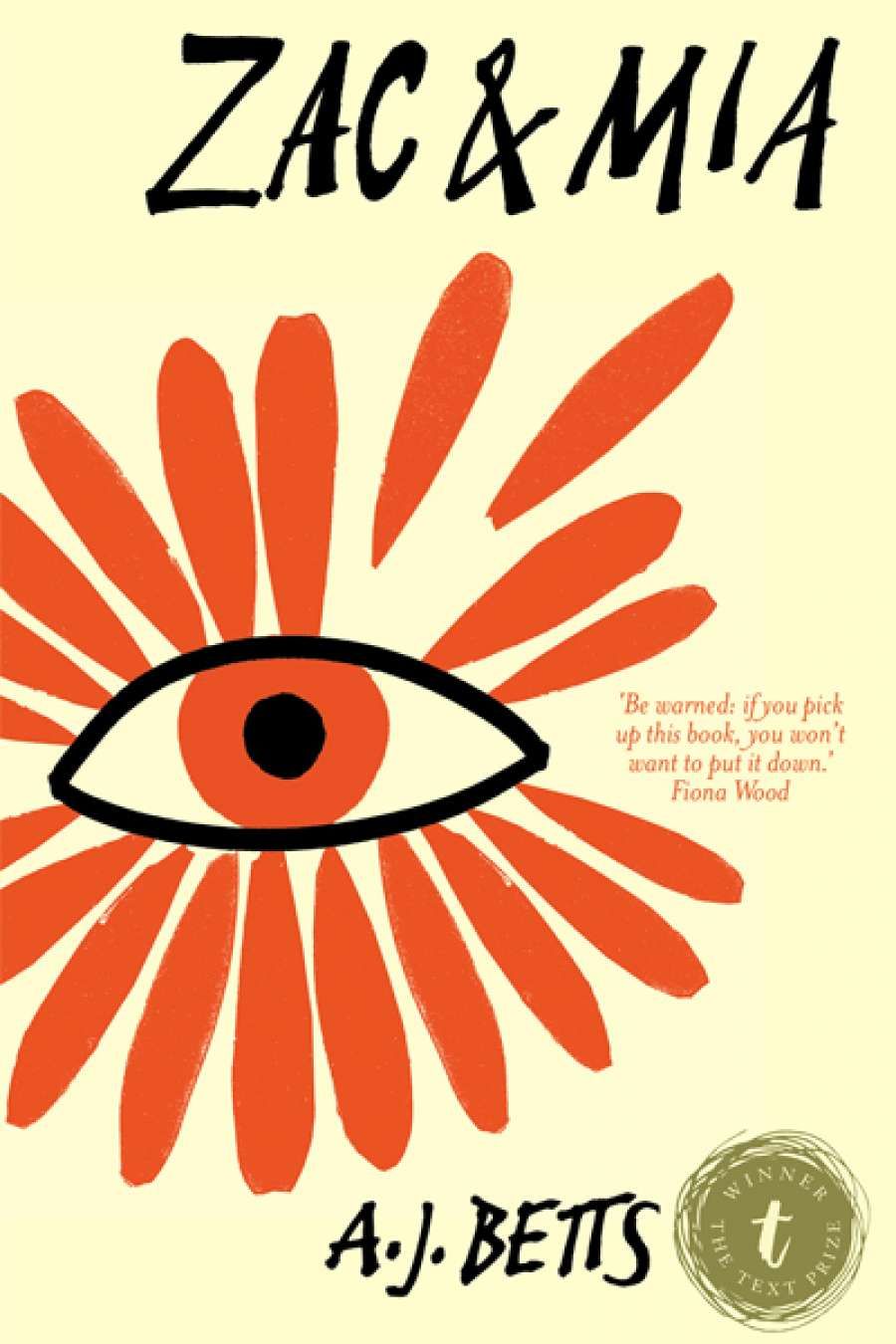
- Free Article: No
- Contents Category: YA Fiction
- Custom Article Title: Maya Linden reviews 'Zac & Mia' by A. J. Betts
- Review Article: Yes
- Book 1 Title: Zac & Mia
- Book 1 Biblio: Text Publishing, $19.99 pb, 310 pp, 9781922147257
- Book 1 Readings Link: booktopia.kh4ffx.net/6Oj4r
At the opening of the novel we are plunged into a bleak world furnished with bedpans and drips: an oncology ward treatment room that is so claustrophobic to its inhabitant, leukaemia patient Zac, it feels like ‘a cabin beneath the water’s surface’. This place of limbo between life and death seems an unlikely setting for a teenage romance, until Zac’s monotonous cycle of chemotherapy, bone marrow transplants, infections, and protracted recovery is broken by the arrival of the beautiful, seventeen-year-old Mia. The vibrant newcomer is full of life and full of rage at the illness that has disrupted her routine of parties, study, and boys. Located in adjacent rooms, the pair’s tentative friendship begins with a tap on the wall between their two beds, like a Morse code SOS. Their attraction, their proximity, and their inability to physically connect lend an enthralling tension to the narrative as they catch fleeting glimpses of each other. Eventually, their knocking progresses to sending notes via nurses, then to Facebook friendship and online chats, and into the real world where even bigger challenges await after both are discharged. They return to their old lives fundamentally changed. Confrontation with their own mortality has brought about a shift in their view of things – limbs and hair are no longer taken for granted. As Mia notes, even a horror movie fails to shock.
Zac and Mia’s experience is evoked so vividly that it is no surprise to learn the book is the result of some incidental research. Since 2004 Betts has been an English teacher with Hospital School Services in Perth. She has spent time teaching in a variety of children’s wards, including an oncology ward, where she has gained insight into treatment processes. What also lends a genuine quality to the writing is Betts’s obvious closeness to the social life of teens – an essential component of any successful Young Adult novel. Zac & Mia is scattered with pop-culture references, chapters are punctuated with Facebook status updates, and conversations are sometimes relayed in the form of online chat which will no doubt offer points of connection for young readers.
Despite the hospital psychologist’s claim that ‘online communication is essential’ to surviving the isolation of treatment, the novel also touches on the chasm between the Internet and reality. We discover that Mia is maintaining to her Facebook friends that she is only suffering from a netball injury, while Zac finds that ‘cancer is a Facebook magnet’. Both note the transience of online identity – where you can shut down your profile and erase yourself from someone’s life in a second – and the truth that you can have hundreds of virtual friends and still feel completely alone. The superficiality of online interaction, such as the easy action of ‘liking’ a post that does not offer any sincere support, is contrasted with the depth of the pair’s growing connection.
Mia is a feisty, likeable character who ‘asks the kinds of things everyone else avoids’, such as ‘where do the Facebook profiles of dead people go?’ The chapters told from her point of view gradually shift in tone from fierce and defiant to calm and poetic: Zac’s face ‘is like the night sky, the way it changes each time you look away’. Betts showed with Shutterspeed (2008) that she could write the first-person adolescent male voice well, and she does so again with Zac. Wry humour emerges as his coping mechanism, yet, light-hearted jibes at Mia and his mother are contrasted with a darker pursuit, a deepening compulsion to obsessively research statistics concerning survival rates and recurrence probabilities for different kinds of cancers. Both characters find that their lives after treatment are defined by harsh statistics that ‘can’t be argued with … both only living as fractions’ but wanting to be whole.
Repeatedly, Zac and Mia state that they ‘just want to be normal’. In this way, the novel presents a familiar narrative (the vacillating adolescent desire between wanting to rebel and stand out and fit in and be ‘normal’) in this case, played out against the extraordinary setting of a journey to recovery.
As the sister of a cancer survivor, I have experienced many elements of this narrative closely and know how it is often those around the person undergoing treatment who struggle most with anger and depression, while the patient wants more than anything for life to carry on as usual and to maintain an ordinary routine. Betts explores the reactions of Zac and Mia’s friends and family with an insightful awareness of this tendency for fear to express itself in resentment or over-protectiveness, an effort to affect dominance over anything you can when faced with a disease that feels so unpredictable and uncontrollable. As Mia says, ‘They say cancer makes you stronger. It doesn’t. It messes with your head. It gives you an itch you can’t scratch and a heart that won’t stop aching.’


Comments powered by CComment